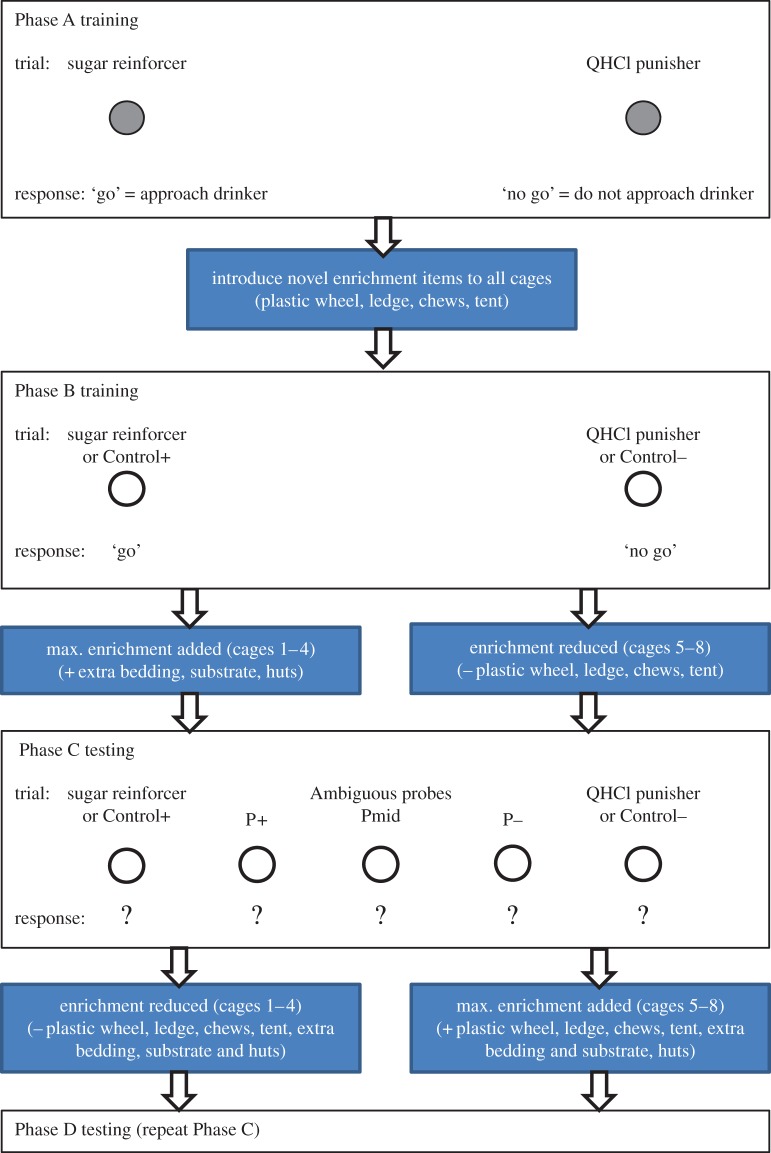Figure 2.
The judgement bias task. During training (Phase A) hamsters learned to approach the sugar drinker (‘go’) and not to approach (‘no go’) the QHCl drinker. At the end of Phase A, all animals received a basic provision of novel enrichment items. Training on the go/no-go task was maintained in Phase B with the inclusion of the empty drinker on some trials to create a 50% VRR (empty drinker trials: ‘Control +’ and ‘Control −). Towards the end of Phase B half of the sibling groups received the maximum complement of enrichment, while the novel enrichment items were removed from the other half of the sibling groups. Animals were tested on the judgement bias task on the following week (Phase C) with the presentation of the empty drinker at all five locations, including the three ambiguous intermediate probe locations. Enrichments were then switched and animals tested again in Phase D.

